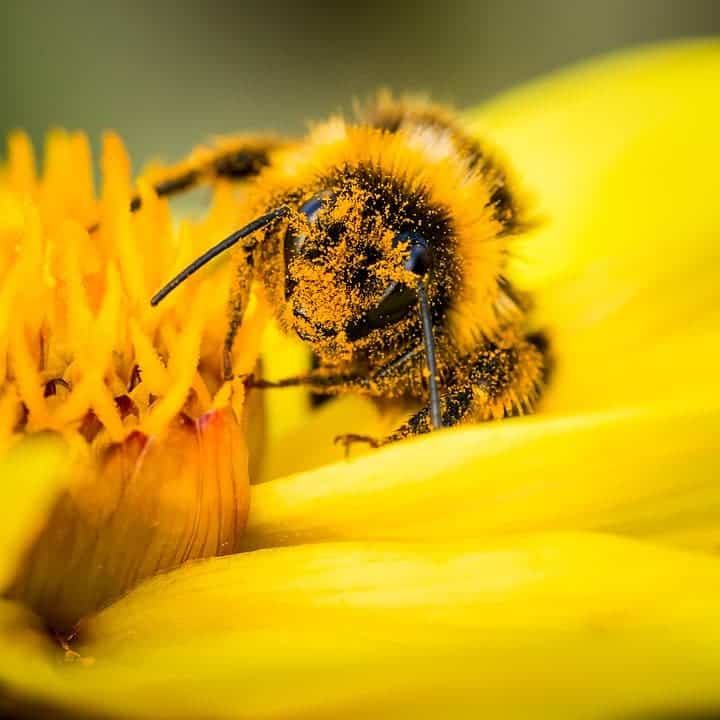Bumblebee queens are finding it harder and harder to cope — and, as they go, so do their colonies.
It’s not easy being royalty, at least not if you’re a bumblebee. Every year after emerging from hibernation, bumblebee queens must prepare the nest, lay eggs, and rear larvae — all on their own. Needless to say, it’s a highly demanding job. And, if they fail to live up to it, there won’t be any colony. New research worryingly shows that we might be putting more on the plate of these single moms than they can shoulder.
Queen of an empty castle
The research team at the University of California Riverside reports that exposure to widely-used insecticide substances, along with poorer diets caused by reduced availability of flowers, are taking a toll on the queens. Since each must get the colony up and running by herself, the team is worried this effect will have drastic consequences on the bumblebees — a critical pollinator that’s already wavering.
Bumblebees play a key role in both natural and agricultural settings. They’re fuzzy and fast, meaning they can carry quite a lot of pollen around. They’re not picky, meaning they’ll pollinate virtually every flower they can get to. A lot of our crops today — from tomatoes to blueberries — heavily depend on bumblebees as the main pollinator species. However, unlike honey bees, bumblebee colonies need to be reset each year, starting from a single queen — making the species incredibly vulnerable during this phase.
“Queens are probably already a bottleneck for bumblebee population dynamics,” said Hollis Woodard, an assistant professor of entomology at the University of California Riverside and paper first author.
“If a queen dies because of exposure to humanmade stressors, then a nest full of hundreds of important pollinators simply won’t exist.”
Previous research has linked insecticide use — including neonicotinoids, one of the most widely-used of such compounds — with a decline in pollinator numbers. Neonicotinoids are usually applied to seeds, the team writes, but they can seep into the soil. And that’s where bumblebee queens hibernate. The compounds can also accumulate in the mature plant’s tissues, including its pollen and nectar.
Another factor that’s impacting bumblebees is declining floral diversity. This is mostly due to the use of land for agriculture and broader global changes that affect ecosystem integrity, such as climate change. According to the team, bumblebees “collect pollen from a wide variety of plant species,” and there is evidence that they need a mixed diet. Dining on pollen from a single species just doesn’t cut it for the fuzzy insects.
The team tested the effects of temporary and sustained exposure to imidacloprid — a neonicotinoid — on a queen’s mortality, activity, and ability to set-up a healthy nest. They also ran the test to see what effect a single source of pollen would have on those factors.
Their results showed that queens were significantly less active and six times more likely to die after sustained exposure to the pesticide (37 days). A shorter exposure (17 days) somewhat reduced these effects. More worryingly, even if the queens survived, they produced only a third of the eggs and a quarter of the larvae of untreated queens.
Monofloral pollen didn’t have such drastic effects, but it still noticeably influenced a queen’s activity levels and the size of its brood.
“Ours is the first study to explore the impact of multiple stressors on bumblebee queens during an understudied but important phase of their lives. It joins a small but growing body of research suggesting there are unique effects on queens that can have dramatic consequences for future generations,” Woodard said.
Woodard believes the findings are grounds for U.S. policymakers to reconsider the use of neonicotinoids. The EU has already set a ban on the use of these substances, to come into effect by the end of 2018.
Since bumblebees and pollinators on a whole are so immensely valuable to humanity, I hope Woodard’s warning is heeded.
The paper “Effects of neonicotinoid insecticide exposure and monofloral diet on nest-founding bumblebee queens” has been published in the journal Proceedings of the Royal Society B: Biological Sciences.










